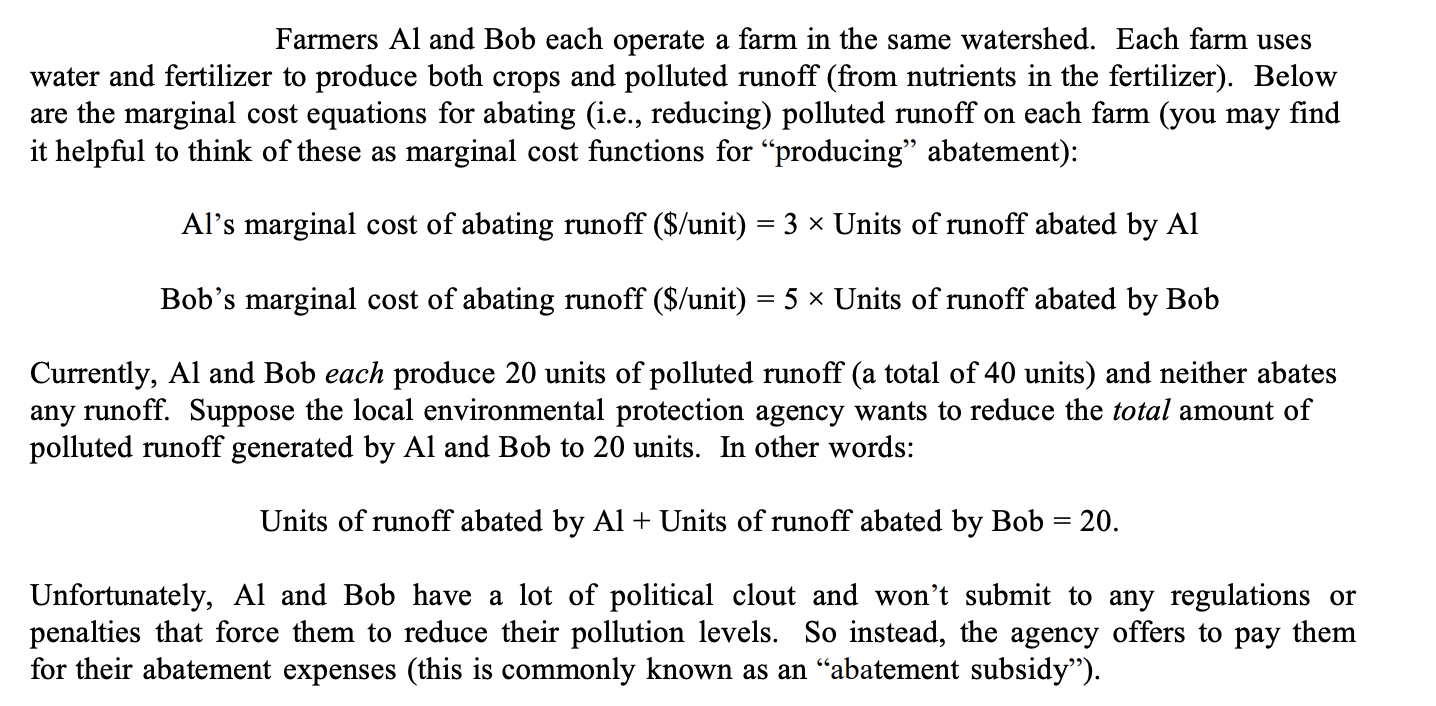Farmers Al and Bob each operate a farm in the same watershed. Each farm uses water and fertilizer to produce both crops and polluted runoff (from nutrients in the fertilizer). Below are the marginal cost equations for abating (i.e., reducing) polluted runoff on each farm (you may find it helpful to think of these as marginal cost functions for "producing" abatement): Al's marginal cost of abating runoff ($/unit) = 3 × Units of runoff abated by Al Bob's marginal cost of abating runoff ($/unit) = 5 × Units of runoff abated by Bob Currently, Al and Bob each produce 20 units of polluted runoff (a total of 40 units) and neither abates any runoff. Suppose the local environmental protection agency wants to reduce the total amount of polluted runoff generated by Al and Bob to 20 units. In other words: Units of runoff abated by Al + Units of runoff abated by Bob = 20. Unfortunately, Al and Bob have a lot of political clout and won't submit to any regulations or penalties that force them to reduce their pollution levels. So instead, the agency offers to pay them for their abatement expenses (this is commonly known as an "abatement subsidy").
(I.) Draw (for yourself) the marginal abatement cost
a. The two lines start from the origin with slopes of 3 and 5 for Al and Bob, respectively
b. The two lines are flat with respect to the horizontal axis with intercepts of 3 and 5 for Al and Bob, respectively
(II.) To achieve its goal, suppose the local agency asks Al and Bob to abate 10 units each and offers to pay their total abatement costs. What is the total cost to the agency?
a. 400
b. 300
c. 250
(III.) (Considering Al’s and Bob’s marginal abatement costs in part (II), has the agency achieved its abatement goal at the lowest possible cost? Why or why not?
a. Yes, because the Equimarginal Principle was satisfied
b. No, because the Equimarginal Principle was not satisfied
c. Yes, because the pollution level was reduced
d. No, because the pollution level was not reduced enough

Trending now
This is a popular solution!
Step by step
Solved in 3 steps with 2 images


